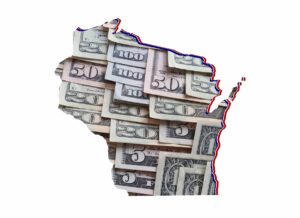Margins tightened for agriculture over the past year, but it’s not without opportunity in 2024, Wisconsin Farm Bureau Federation reports.
“It is important for farmers to follow their business plan, use the tools available to them, and protect a profit when they can,” says WFBF Board Member Kevin Krentz. “Even when 2023 was another hard year in dairy, farmers who utilized tools such as Dairy Revenue Protection and Dairy Margin Coverage had a successful year.”
Krentz’s economic outlook is part of the Wisconsin Bankers Association’s compilation of eight sector-specific reports by industry experts. These reports provide an overview of what is in store for Wisconsin’s economy in 2024: https://www.wisbank.com/2024forecast/
He writes: “2023 was an anxious year for farmers. The year started with many geopolitical issues, such as elevating fertilizer prices, continued supply chain disruptions, and trade tensions. While global challenges did not completely subside, domestic issues became more dominant. Inflation, interest rates, and labor costs have become some of the most prevalent concerns of farmers across Wisconsin.
Although inflation has slowed recently, prices are still high for farmers. Some prices are driven by a strong dollar increasing import costs, such as the costs of chemicals and fertilizers. Though fertilizers were cheaper than in 2022, they were still relatively high historically speaking. Much of the increase in domestic costs was driven by labor costs. From parts to supplies, equipment to services, labor costs have increased throughout the supply chain and pushed costs higher for farmers.
Farming is a high-asset, low-margin industry. In 2023, Wisconsin agriculture not only saw higher replacement costs for assets, but interest rates we haven’t experienced in a generation. This has slowed and will continue to slow asset updates and growth as everyone tries to determine how transitory the rate increases are.
As unemployment rates remain historically low, on-farm labor costs have risen in recent years. According to USDA National Agricultural Statistics Services, farm labor rates were up 4–10% in May of 2023 from the year prior. The range is dependent on the area of farm work.
May rolled around, and farmers across the state were busy planting. By mid-May, the rain turned off and some parts of Wisconsin experienced some of the worst drought conditions in more than a generation. Planting in these conditions led to inconsistent germination in fields as seeds waited for water. Parts of Wisconsin went for up to three months with less than an inch of rainfall. This even affected deep-rooted crops, stressing alfalfa and pastures. Yield concerns increased as the growing season continued. But crop genetics have improved dramatically during the last 20 to 30 years, helping make crops much more drought-tolerant than years before. As harvest began, most farmers were surprised by the above-average yields they experienced. The higher-than-expected yields also caught the markets off guard, and commodity prices quickly took a hit.
As we conclude 2023, Wisconsin farmers have many justifiable concerns. In general, farmers are optimists. They are good at finding solutions and are looking forward to another productive year in 2024.”


